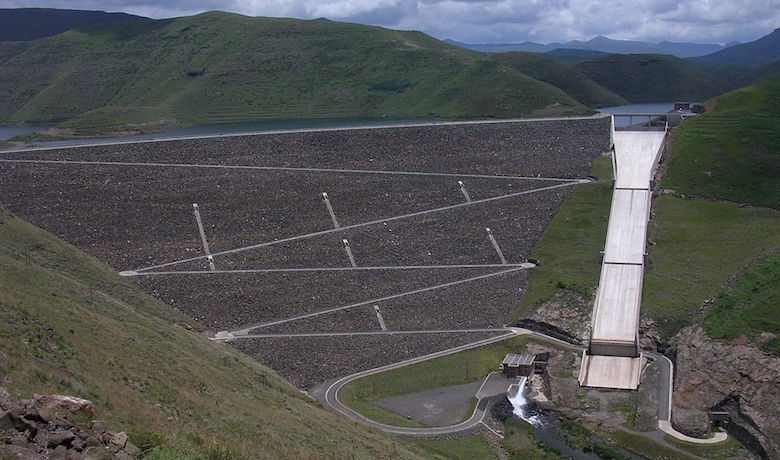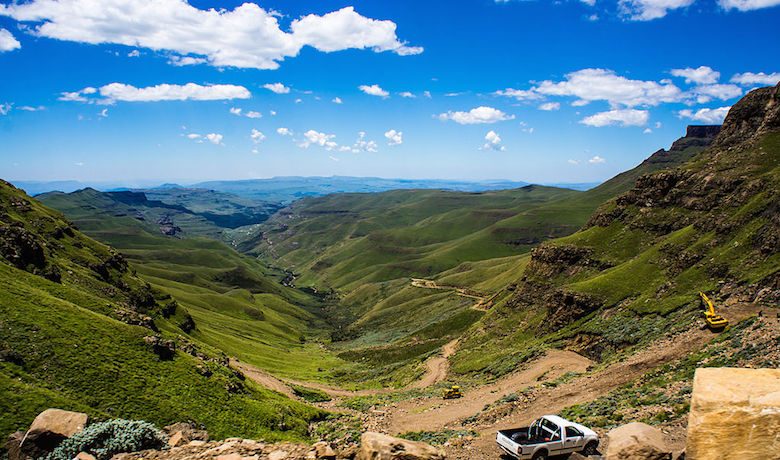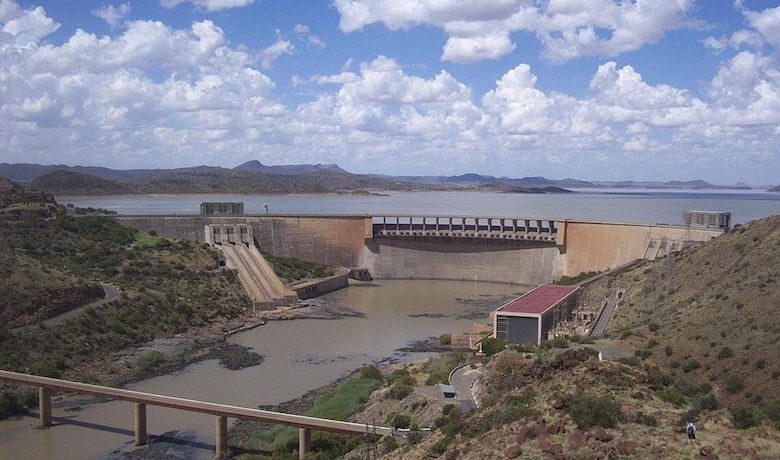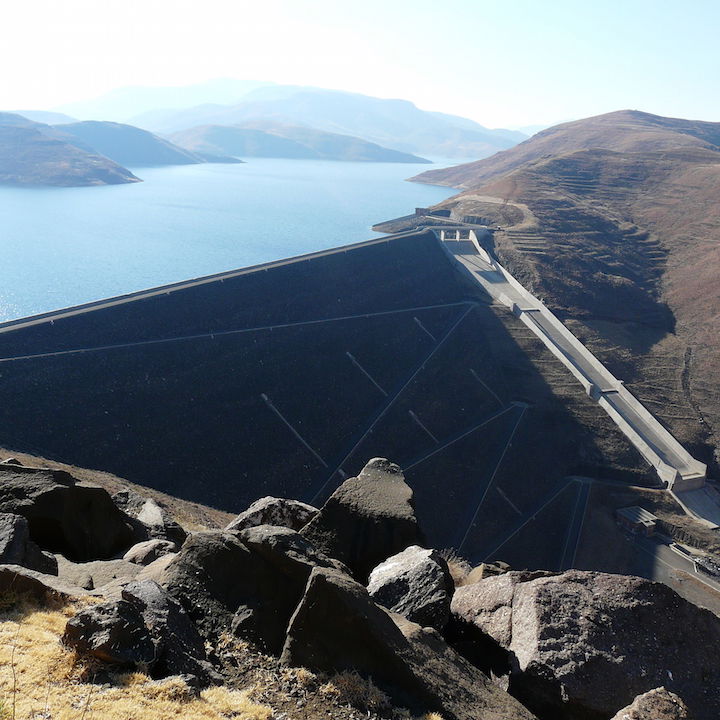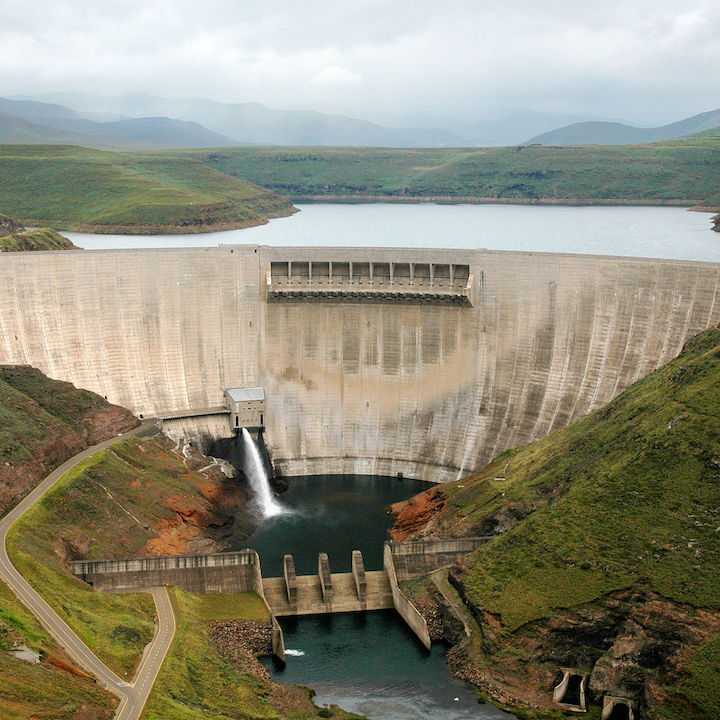Background
Since the early 1950s, the governments of the ten Basotuland and Union of South Africa protectorates had studied the possibility of diverting the waters of the Orange River in Lesotho into the Vaal River nearby. Subsequently, the growth of metropolitan centres in the area caused a sharp increase in the demand for water. In 1978, both countries decided to launch a joint feasibility study. The study, which assessed more than 2,000 variants for several alternative options, recommended a four-phase, 25-year construction project to keep pace with the rising need for water in South Africa.
This development project in the Lesotho Highlands included the construction of five dams and a dual tunnel more than 200 kilometres long designed to supply 70 m3/s of water to the Vaal River in South Africa. Our consortium was entrusted with several activities in the initial phase of this major project.


